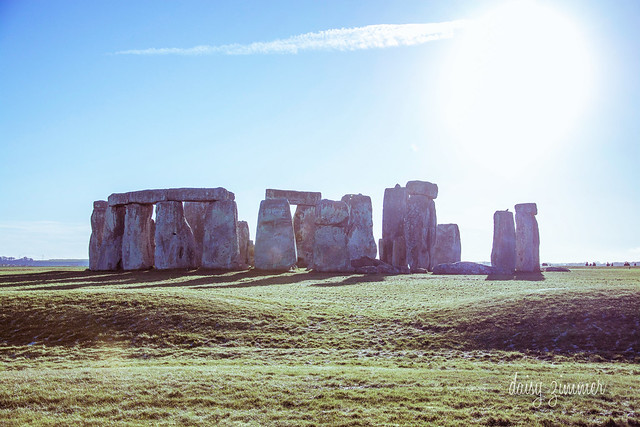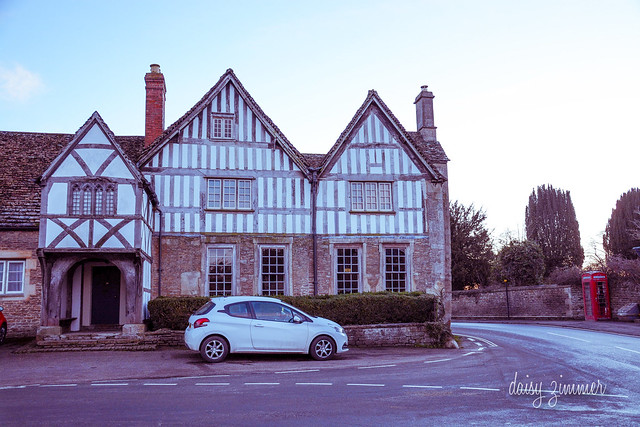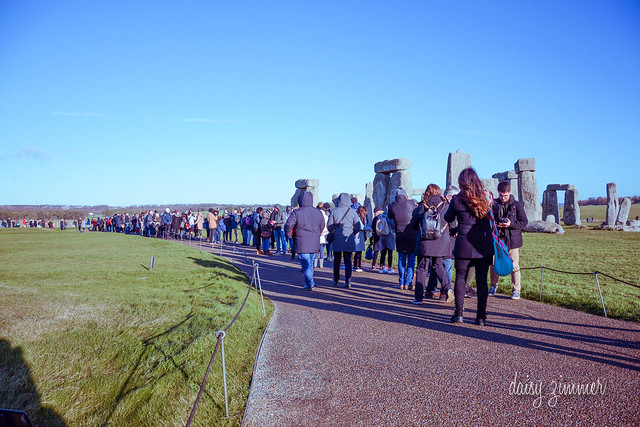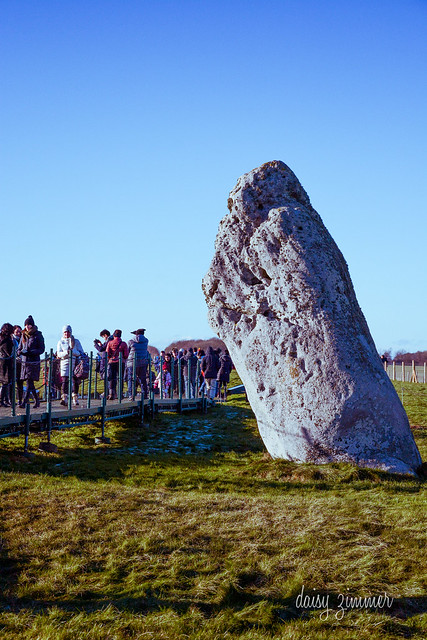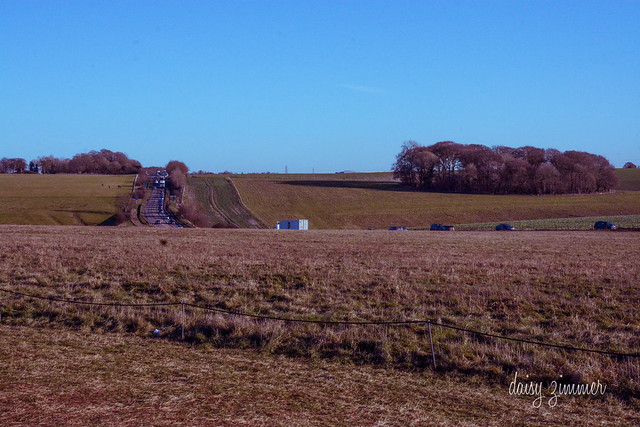It wouldn’t be a complete trip to the UK if we left out a visit to the mysterious and wonderful Stonehenge in Salisbury. This UNESCO World Heritage site has always been on my bucket list, partially because I love the element of uncertain history and partially because it was in Tess of the D’Urbervilles (a book I love to hate).
We stopped here as part of a full-day tour that also touched in Windsor, Bath, and a tiny Medieval village called Lacock that is so well-preserved it doesn’t even have telephone poles.
Since it was such a busy day we only got to spend about 1 hour at Stonehenge but I think that was plenty of time if you just want to see the stones.
Parking is at the visitor’s center, which also has an exhibit and a gift shop. The entrance fee is pretty steep at a whopping £16.50 for an adult ticket, but we had pre-booked tickets with our tour. From the visitor’s center you catch a shuttle that runs 1.5 miles up the road to the site. It’s pretty far out there, in the middle of sweeping fields with not a lot of shrubbery. The site is huge, spanning an area almost 8 times the size of NYC’s Central Park, according to our tour guide.
Visitors can also choose to walk instead of taking the shuttle. We saw several people making the trek but unfortunately we didn’t have time to dawdle.
The stones are cordoned off by a low rope, and a walking path forms a complete circle so you can experience a 360º unobstructed view.
I’m glad that we were able to get close because it really helped us see how large the stones actually are. We were told the heaviest stone is 30 tons. That’s a number I can’t really understand on paper, but when I was standing there gawking up at these massive pillars and trying to imagine how they got dragged into place, it definitely put things in perspective.
There’s also more to Stonehenge than just the main circle. The path will take you directly past the Heelstone, which is a very crucial element to the overall site. It marks the place on the horizon where the summer solstice sunrise appears when viewed from the centre of the stone circle. This intentional design is one of the reasons there is so much speculation regarding Stonehenge’s original purpose. Was it an altar? A ceremonial venue? An oasis with healing properties?
Our tour guide told us a short story on the bus about the remains of a prehistoric man that were discovered near the site. Evidently, he had a bone abscess in his jaw that was so large it had deformed his bone structure and a condition in his knees that would have made it nearly impossible to walk. They somehow identified that he had travelled to Stonehenge from an area near present-day Switzerland. Stonehenge must’ve been something important, because this guy sounded pretty motivated.
Perhaps we’ll never know what Stonehenge was, and that’s fine with me. I can live with a little mystery.
Something that had me chuckling was the highway right next to the stone circle. It’s not really an imposition, but it does make an interesting scene. You can see below where the observation pathway is marked and how close the road is.
I always thought of Stonehenge as an extremely isolated place, far away from any populated areas. And it is, for the most part… except for that road! So, yes, you can drive past Stonehenge if you really want to.
All in all, this was a great stop and I would highly recommend squeezing it into your itinerary if you’re planning to visit London.

